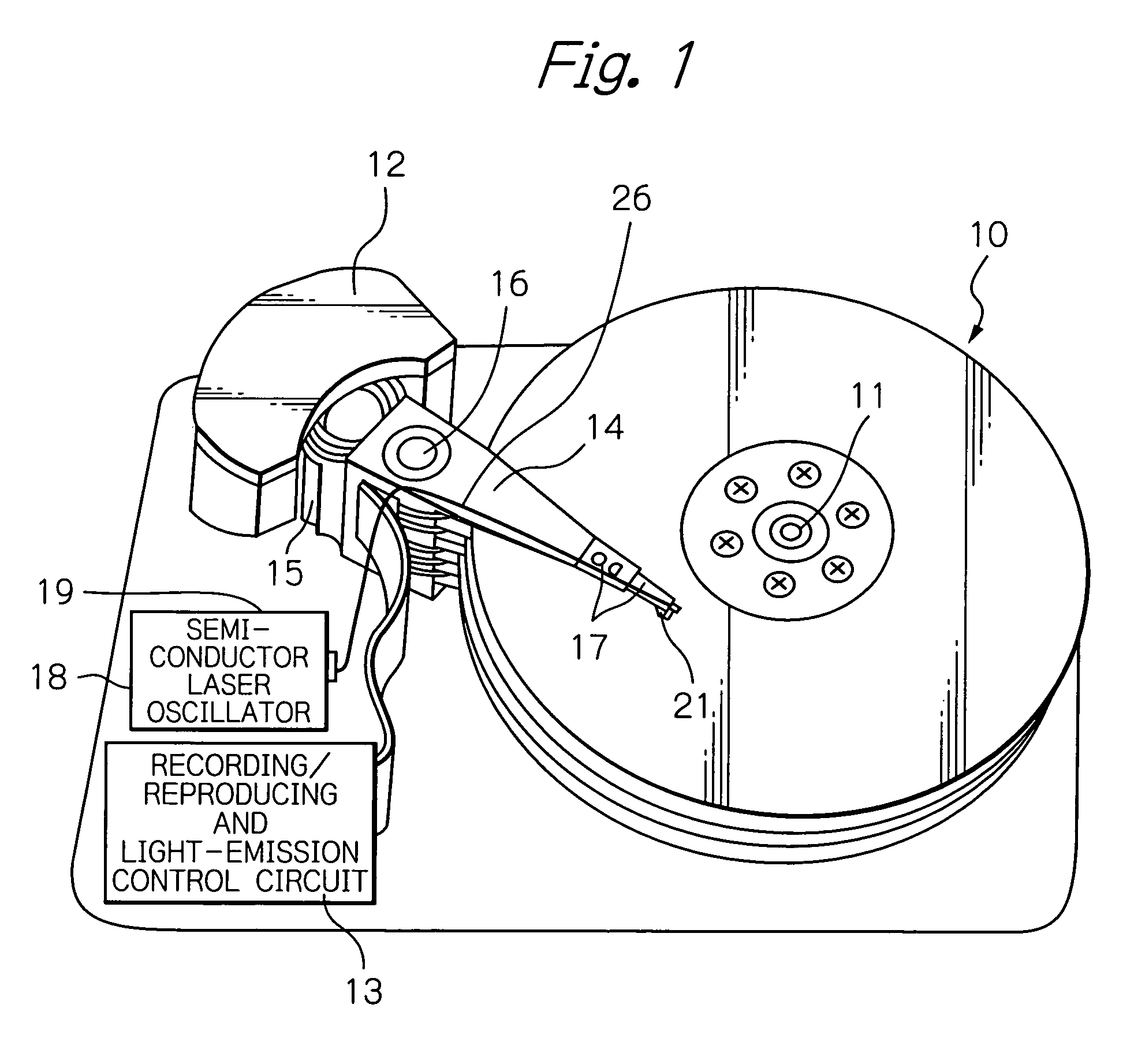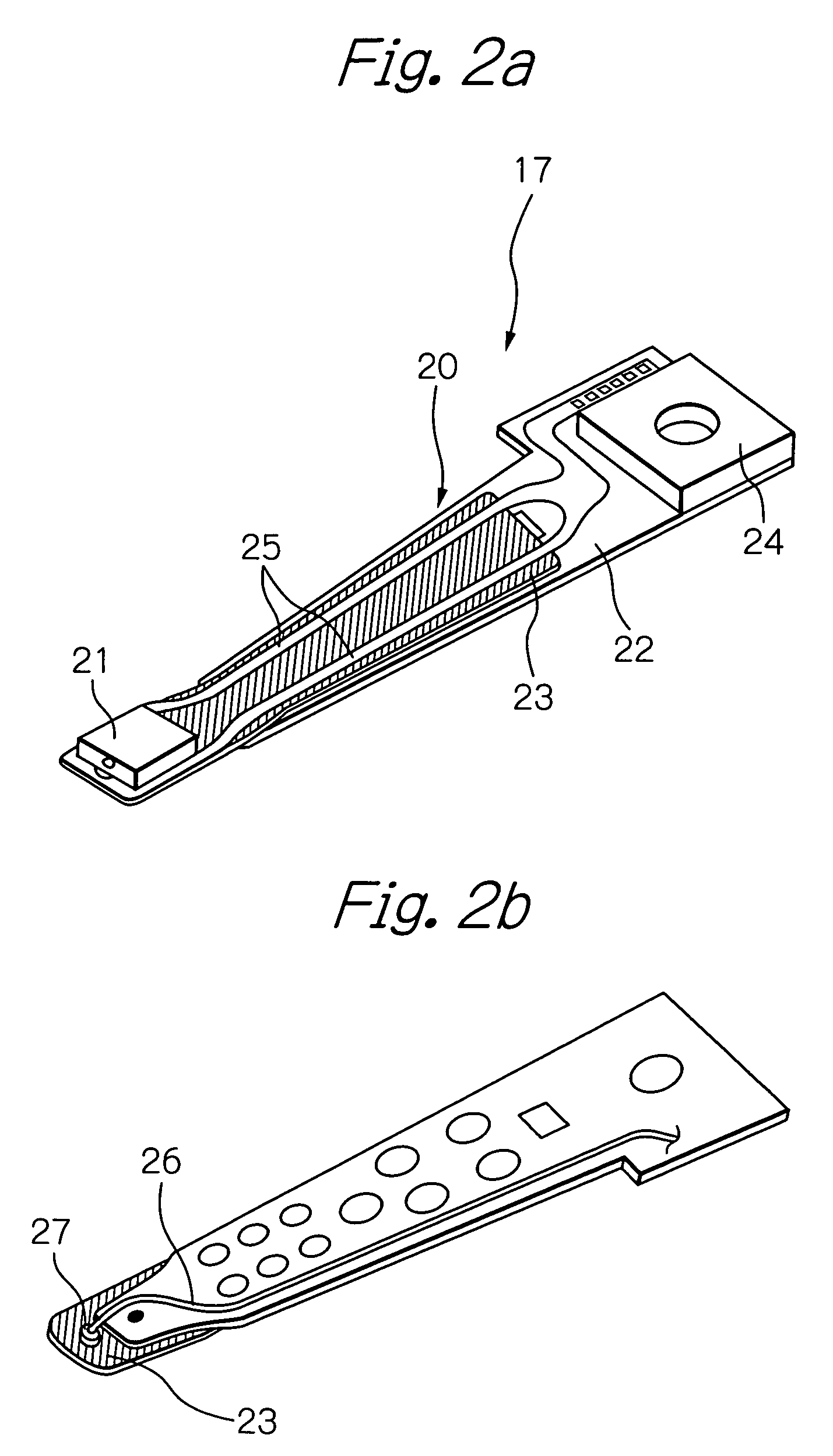Thin-film magnetic head with near-field-light-generating layer
a magnetic head and near-field light technology, applied in special recording techniques, instruments, optical beam sources, etc., can solve the problems of increasing the coercive force of the magnetic recording medium, reducing the reliability of the magnetic head for writing data signals, and reducing the magnetic stability of the recording bit. achieve the effect of high reliability
- Summary
- Abstract
- Description
- Claims
- Application Information
AI Technical Summary
Benefits of technology
Problems solved by technology
Method used
Image
Examples
first embodiment
[0074]FIG. 4a shows a cross-sectional view taken along the line A-A in FIG. 3a schematically illustrating a major portion of the thin-film magnetic head according to the present invention, and FIG. 4b shows a perspective view schematically illustrating the NFL-generating layer and the main magnetic pole layer that are overlapped with each other. The number of turns of the coil shown in FIG. 4a may be smaller than the actual one, for simplicity of drawings.
[0075]As shown in FIG. 4a, the MR effect element 33 has an MR multilayer 332, a lower shield layer 330 and an upper shield layer 334 provided in positions sandwiching the MR multilayer 332. The MR multilayer 332 includes a tunnel magnetoresistive (TMR) multilayered film in which a tunnel barrier layer is pinched by a free layer and a pinned layer, a current-perpendicular-to-plane giant magnetoresistive (CPP-GMR) multilayered film, or a current-in-plane giant magnetoresistive (CIP-GMR) multilayered film, and senses signal fields fro...
second embodiment
[0109]FIG. 8a shows a cross-sectional view taken along the line A-A in FIG. 3a schematically illustrating a major portion of the thin-film magnetic head according to the present invention. The number of turns of the coil shown in FIG. 8a may be smaller than the actual one, for simplicity of drawings.
[0110]In FIG. 8a, the constituent materials and structures of an MR effect element 33, an electromagnetic coil element 34, an NFL-generating layer 35 and an overcoat layer 40 may be almost the same as the corresponding elements of the first embodiment shown in FIG. 4a, and therefore, the explanation of these elements is omitted below.
[0111]As shown in FIG. 8a, a thermal protrusion layer 81 is provided between an NFL-generating portion 350 of the NFL-generating layer 35 and an end portion 344a of the main magnetic pole layer 344, being much close to the NFL-generating portion 350 through an insulating layer 82 formed of SiO2, Al2O3 and so on with thickness of approximately 3 nm to 20 nm, ...
third embodiment
[0123]FIG. 10a shows a perspective view of the thin-film magnetic head provided on the end portion of the HGA shown in FIGS. 2a and 2b, and FIG. 10b shows a plain view schematically illustrating a magnetic head element shown in FIG. 10a. For viewability, a reflective layer 38 shown in FIG. 10a is omitted in FIG. 10b.
[0124]As shown in FIG. 10a, the thin-film magnetic head (slider) 21′ is provided with a slider substrate 210 having an ABS 30 as an opposed-to-medium surface for obtaining an appropriate flying height and an element-formed surface 31 perpendicular to the ABS 30, a magnetic head element 32 formed above / on the element-formed surface 31, an NFL-generating layer 35′ for generating a near-field light used for the heat-assisted magnetic recording, a reflective layer 38 provided above the NFL-generating layer 35′, an overcoat layer 40′ formed on the element-formed surface 31 so as to cover the magnetic head element 32, the NFL-generating layer 35′ and the reflective layer 38, ...
PUM
| Property | Measurement | Unit |
|---|---|---|
| flying height | aaaaa | aaaaa |
| oscillation wavelength | aaaaa | aaaaa |
| diameter | aaaaa | aaaaa |
Abstract
Description
Claims
Application Information
 Login to View More
Login to View More - R&D
- Intellectual Property
- Life Sciences
- Materials
- Tech Scout
- Unparalleled Data Quality
- Higher Quality Content
- 60% Fewer Hallucinations
Browse by: Latest US Patents, China's latest patents, Technical Efficacy Thesaurus, Application Domain, Technology Topic, Popular Technical Reports.
© 2025 PatSnap. All rights reserved.Legal|Privacy policy|Modern Slavery Act Transparency Statement|Sitemap|About US| Contact US: help@patsnap.com



